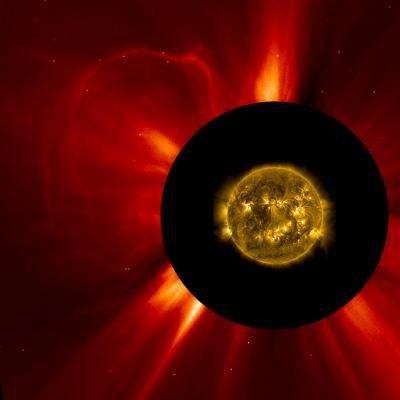NASA's STEREO detects a CME from the sun

On 5:24 a.m. EDT on May 17, 2013, the sun erupted with an Earth-directed coronal mass ejection or CME, a solar phenomenon that can send billions of tons of solar particles into space that can reach Earth one to three days later and affect electronic systems in satellites and on the ground. Experimental NASA research models, based on observations from NASA's Solar Terrestrial Relations Observatory, show that the CME left the sun at speeds of around 745 miles per second. The solar material in CMEs cannot pass through the atmosphere to affect humans on Earth.
Not to be confused with a solar flare, a CME can cause a space weather phenomenon called a geomagnetic storm, which occurs when they connect with the outside of the Earth's magnetic envelope, the magnetosphere, for an extended period of time.
The CME may also pass by Spitzer and its mission operators have been notified. If warranted, operators can put spacecraft into safe mode to protect the instruments from the solar material.
Provided by NASA's Goddard Space Flight Center





















